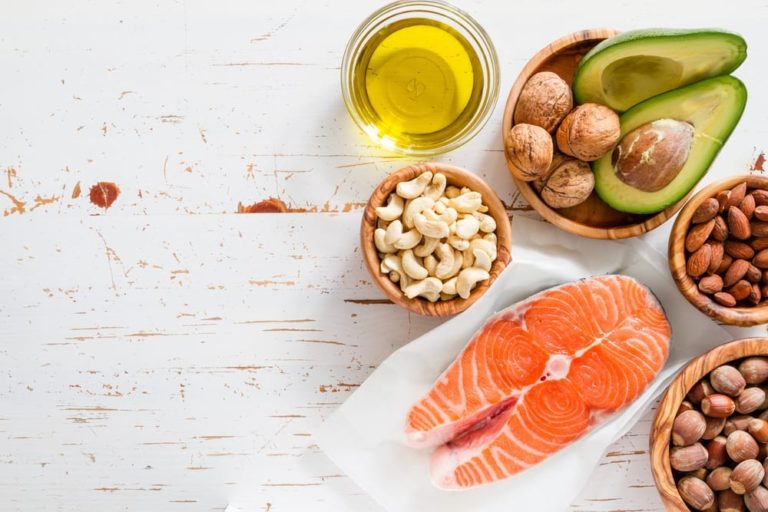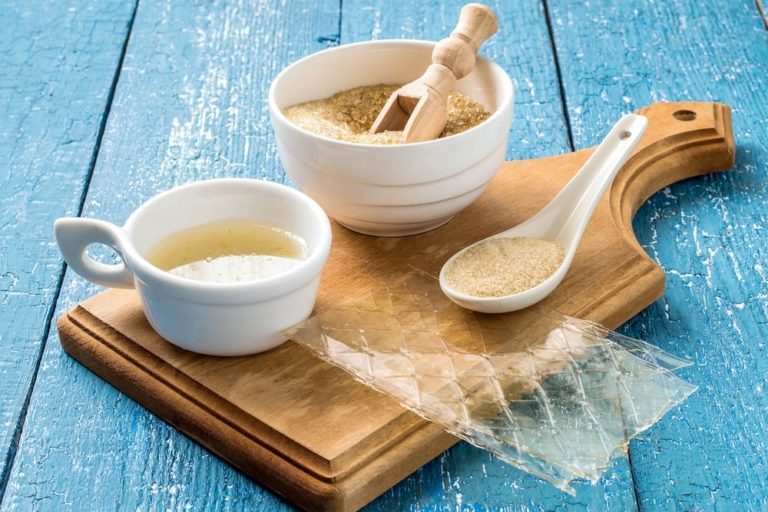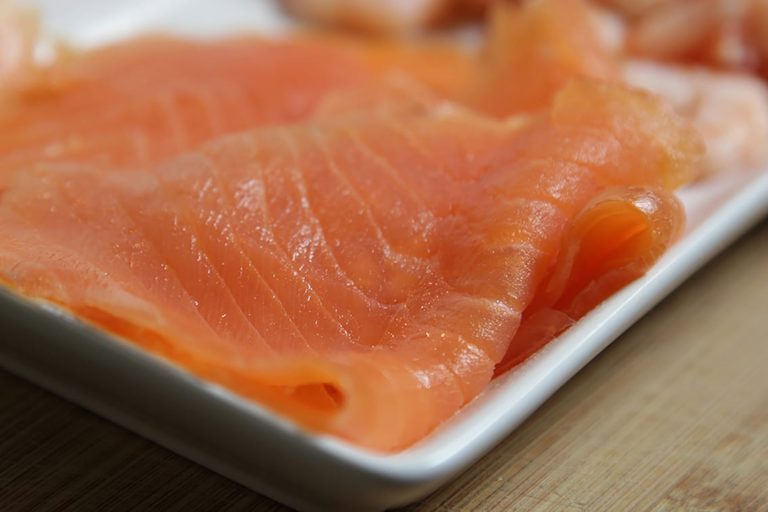Lauric acid is a fatty acid naturally found in large quantities in coconut oil. It is medium-chain and therefore has the properties of a medium-chain fatty acid, but can also be metabolized like long-chain fatty acids. To achieve high ketone body production, other fatty acids are more suitable. Nevertheless, lauric acid has several properties that have a positive effect on our health.
Lauric acid – healthy fatty acid from the coconut

Abstract
Have you ever stumbled across lauric acid while researching MCT oils or coconut oil? We explain you briefly and crisply what you should know about it!
Table of contents
1. what is lauric acid?
Lauric acid is a fatty acid. The name is derived from laurel (Latin: laurus nobilis) because the oil of its fruits has high amounts of lauric acid.
2. where is lauric acid found?
If you talk about lauric acid, there is one thing you can least avoid: coconut oil. There it makes up about half of the fatty acids (up to 53%)! They are also found naturally in palm kernel oil (up to 50%) and around 5% have also been detected in breast milk.
Du möchtest dich auch gesünder ernähren?

3. what does lauric acid do? How does lauric acid work?
Lauric acid is a true multi-talent! Lauric acid brings the following positive features when ingested or applied:
As a medium-chain fatty acid, it can help with weight loss, as body fat appears to be stored more poorly through ingestion. It also causes long-lasting satiety and pushes our energy consumption.
Its antimicrobial action can protect against bacteria, viruses and fungal infections by directly disabling these pathogens. In this context, there is also evidence that lauric acid can prevent the development of caries in the mouth. It is also said to help build the immune system of newborns in breast milk by protecting against viruses and other pathogens.
Lauric acid is a natural protection against ticks: The pests find the smell of the acid annoying and run away when dog and master have rubbed themselves with coconut oil on particularly exposed skin areas.
Many studies suggest that lauric acid in coconut oil positively affects our cardiovascular system. While it was once thought that our cholesterol levels could be negatively affected by this fatty acid, we now know: the wrong conclusions were drawn. In populations with high coconut oil consumption, no negative effects were observed. On the contrary. Today, it is believed that cholesterol levels are improved by the intake of lauric acid. (By the way: If you’ve ever wondered what this ominous cholesterol is all about, we’ll explain everything you need to know in this article: We explain everything you need to know in this article).
Insulin sensitivity seems to be improved by them. This is important because insensitivity of the body to insulin can result in many ailments such as obesity or diabetes (or both). However, since the effects on insulin tolerance are based on very recent studies and there is not too much data on this yet, we will have to wait and see if this effect can be further confirmed.
4. is lauric acid an MCT?
Some say “yes,” others say “no.” We say “yes.” It is often claimed that lauric acid, with 12 carbon atoms, is too large to be a “true” MCT. However, it is certain to have many of the beneficial properties also attributed to the slightly shorter fatty acids:
- they help to lose weight because they make it difficult for the body to store fat
- they cause fast and long-lasting saturation due to the formation of ketone bodies
- they increase energy consumption
How lauric acid is digested in our body cannot be clearly said. Studies suggest that it largely goes the way of the “classic” medium-chain fatty acids. This route is uncomplicated and fast. However, to a somewhat lesser extent, it can also take the complicated and long digestive route of long-chain fatty acids. The decisive factor here is the fat composition of the food consumed. Thus, the decision whether uncomplicated and fast or elaborate and slow, can be different for each meal.
We take a deep breath and hold on:
- Lauric acid has the positive properties of a medium-chain fatty acid
- However, to a certain extent it is also digested like long-chain fatty acids
- You want to achieve the highest possible ketone body production in your body? In this case, it is better to use an MCT oil (made from C8 and C10 fats) instead of coconut oil.
For science nerds and smarties
You may have heard that there are different sizes of fatty acids: short, medium, and long chain. They differ in the number of carbon atoms (C) – the more they have, the longer they are. You can think of it as threading beads onto a necklace: The more beads (carbon atoms) you thread onto it, the longer the chain becomes. With 12 carbon atoms, lauric acid just barely belongs to the group of medium-chain fatty acids. This type is called MCFA(middle chain fatty acid). If it had one carbon more, it would already be called long-chain. One fatty acid rarely comes alone – they usually travel in a pack of 3 and are held together by a molecule (glycerol). If all three fatty acids in this 3-pack are medium-chain, a so-called medium-chain triglyceride, often called MCT(middle chain triglyceride), is formed. (Ha! MCT! Sounds familiar, doesn’t it? You can also buy MCTs in the form of MCT oils. Here, however, the amounts of fats with 12 carbon atoms are usually relatively small).
The reason for the good properties of medium-chain fatty acids lies in digestion: the longer the “string of pearls” is, the more difficult it is to get through our body. Therefore, the long chains also need some help with this (e.g. from bile acids or carnitine). Digestion is thus laborious and takes a relatively long time. Medium-chain fats, on the other hand, need little help. They are digested more quickly and easily and can thus better stimulate ketone body production. As mentioned earlier, lauric acid largely takes the faster digestive route that all other medium-chain fatty acids do. However, it can also take the route where it relies on bile acid and co.
Always stay up to date with our Newsletter.
Sources:
Photo: shutterstock.com / 5 second Studio
Assuncao ML, Ferreira HS, Dos Santos AF, Cabral CRJR, Florencio TMMT, 2009. Effects of Dietary Coconut Oil on the Biochemical and Anthropometric Profiles of Women Presenting Abdominal Obesity. Lipids 44:593-601.
Bragdon JH, Karmen A, 1960.The Fatty Acid Composition Of Chylomicrons Of Chyle And Serum Following The Ingestion Of Different Oils. J Lipid Res 1(2):167-170.
Dayrit FM, 2014. Lauric Acid is a Medium-Chain Fatty Acid, Coconut Oil is a Medium-Chain Triglyceride. Philippine Journal of Science, Vol. 143 No. 2.
Huang et. Al, 2011. Short- and medium-chain fatty acids exhibit antimicrobial activity for oral microorganisms. Arch Oral Biol; 56(7): 650-654.
Nagao K, Yanagita T, 2010. Medium-chain fatty acids: Functional lipids for the prevention and treatment of the metabolic syndrome . Pharmacological Research, 61 (2010) 208-212.
Turner N, Hariharan K, Tidang J, Frangioudakis G, Beale SM, Wright LE, Zeng XY, Leslie SJ, Li J-Y, Kraegen EW, Cooney GJ, Ye J-M, 2009. Enhancement of Muscle Mitochondrial Oxidative Capacity and Alterations in Insulin Action Are Lipid Species Dependent. Diabetes 58:2547-2554.
Similar posts by Foodpunk

The best sources of fat – The daily bite of knowledge
Fat is a great source of energy. If you are on a low carbohydrate diet, you should by no means eat low fat. Because especially in a low carb diet, the body needs the energy from high-quality fatty acids. But not all fat is the same.

What are MCTs? – The daily bite of knowledge
The abbreviation MCT stands for middle chain triglyceride.

Do you know why sleep is also important for losing weight and too little sleep is bad for you? Here we explain it to you!

What is a refeed suitable for? – The daily bite of knowledge
A refeed is useful for all people who follow a very low-carbohydrate diet (under 30-50 g of carbohydrates per day) for a longer period of time and do this diet for more fitness, well-being and a weight loss.

Gelatin vs. collagen – what is the difference?
Gelatin and collagen, both have something to do with connective tissue, but what again exactly? Kick yourself into our article and learn more.

In the low carb diet, you eat no more than about 100g of carbohydrates a day. Find out which foods should and shouldn't be included here!


